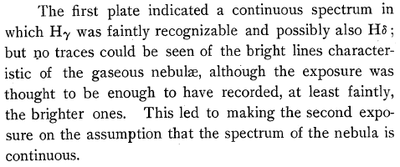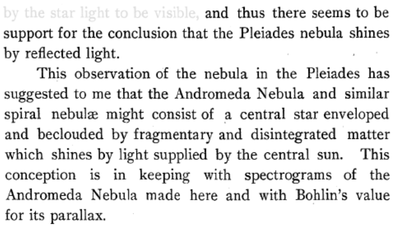On the spectrum of the nebula in the Pleiades. V. M. Slipher in Low. Obs. Bull. 2:26 (1912). What the paper says!?

«I have secured with a spectrograph attached to the 24-inch refractor spectrograms of this nebula which reveal a spectrum of more than common interest.»
This is the paper where Slipher reports the observation of a continuous spectrum for a nebula (in the Pleiades). The finding is that the spectrum is that of the nebula itself and not an artifact from detecting something else. He checked his assumption by contrasting with Sirius. The work was important in clarifying that there exist various types of nebulae and pointing at interstellar dust for this one. He established indeed that the light reflects the light of the nearby Merope. The spectrum is completely continuous, but is not due to two-photon emission, in contrast to the spectra that Page[1] would later find in emission nebula.
Excerpts of interest include the motivation and reward for studying the spectrum:

The description of the spectrum:

The conclusions, that the nebula is dust that reflects light from the nearby star (here Merope):
